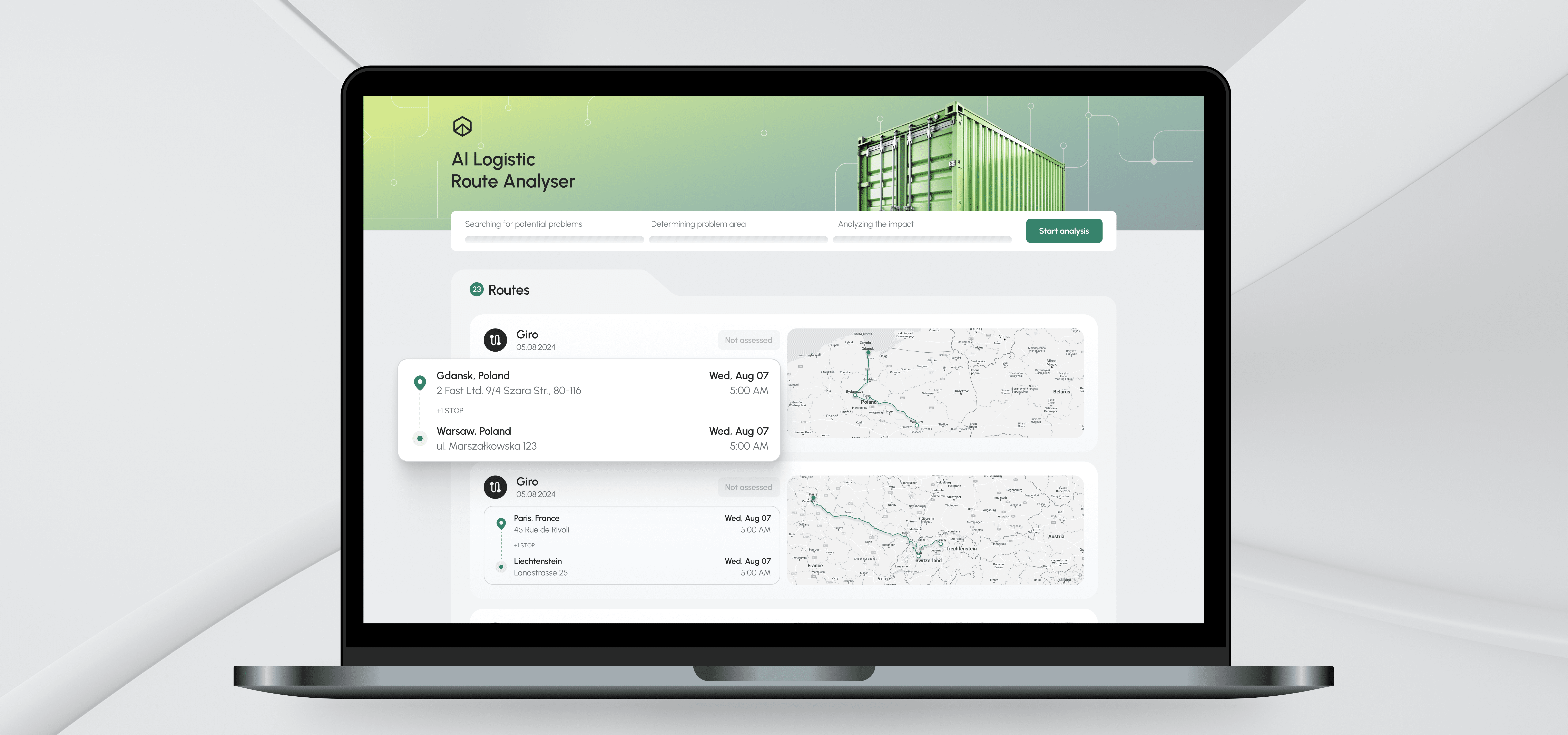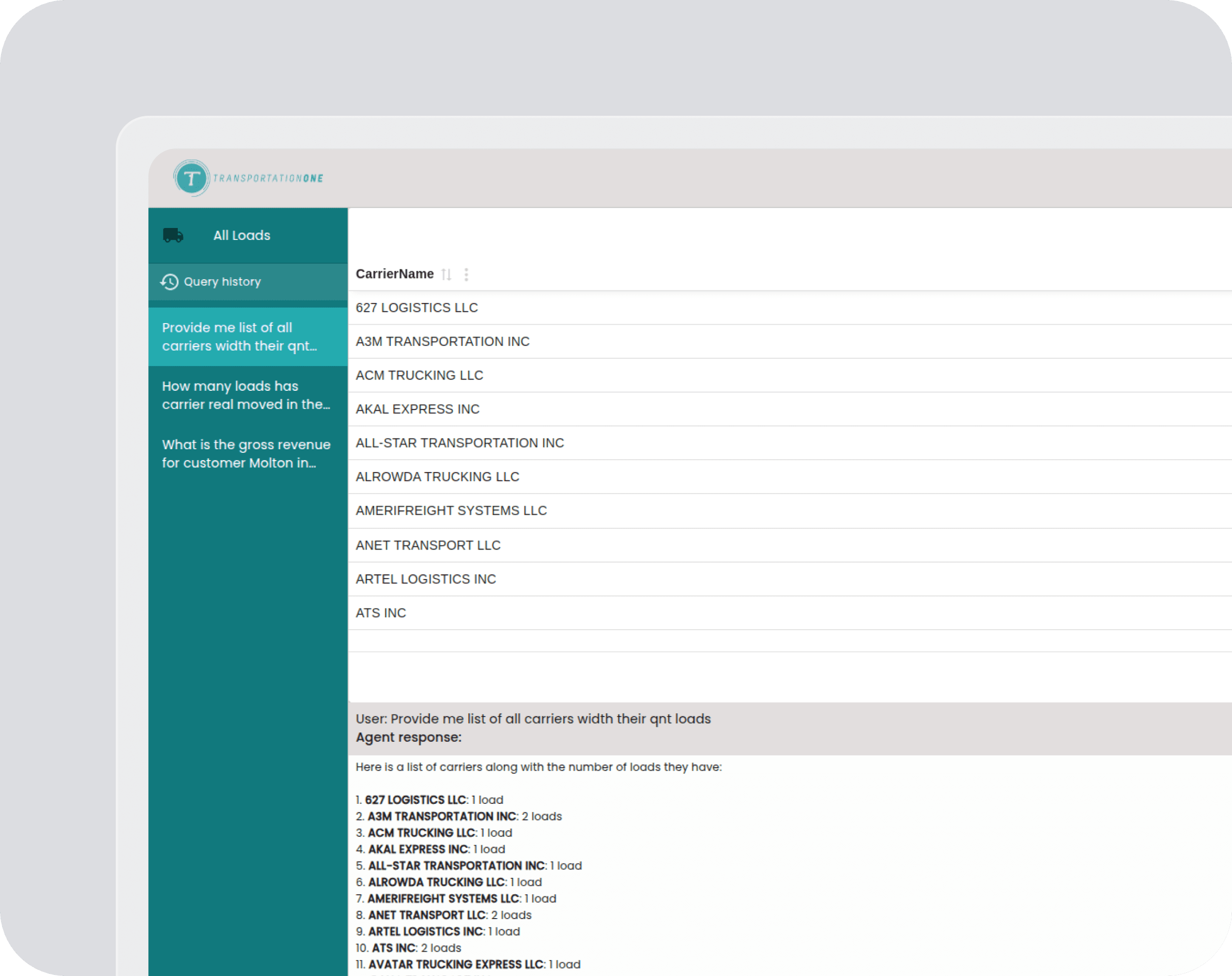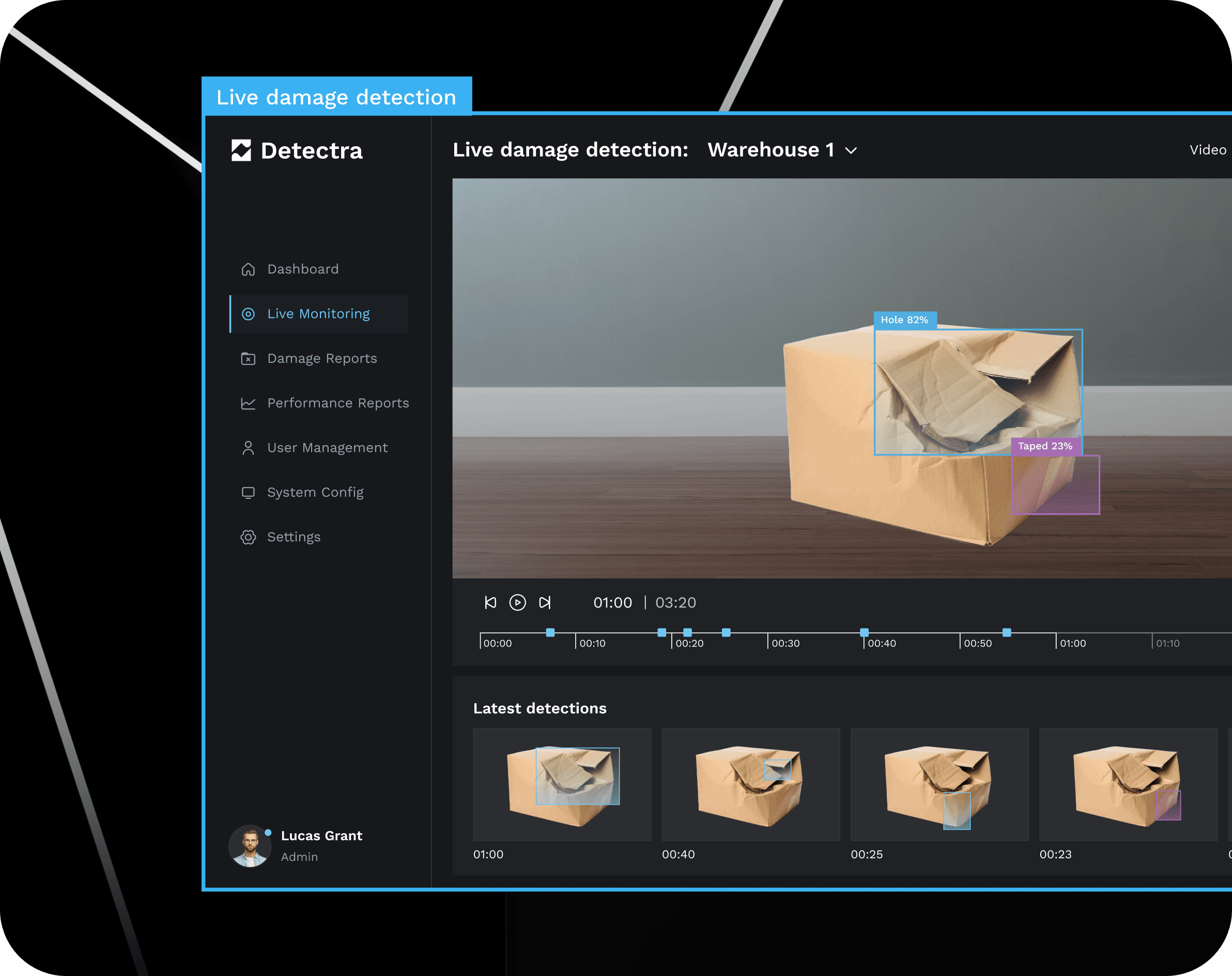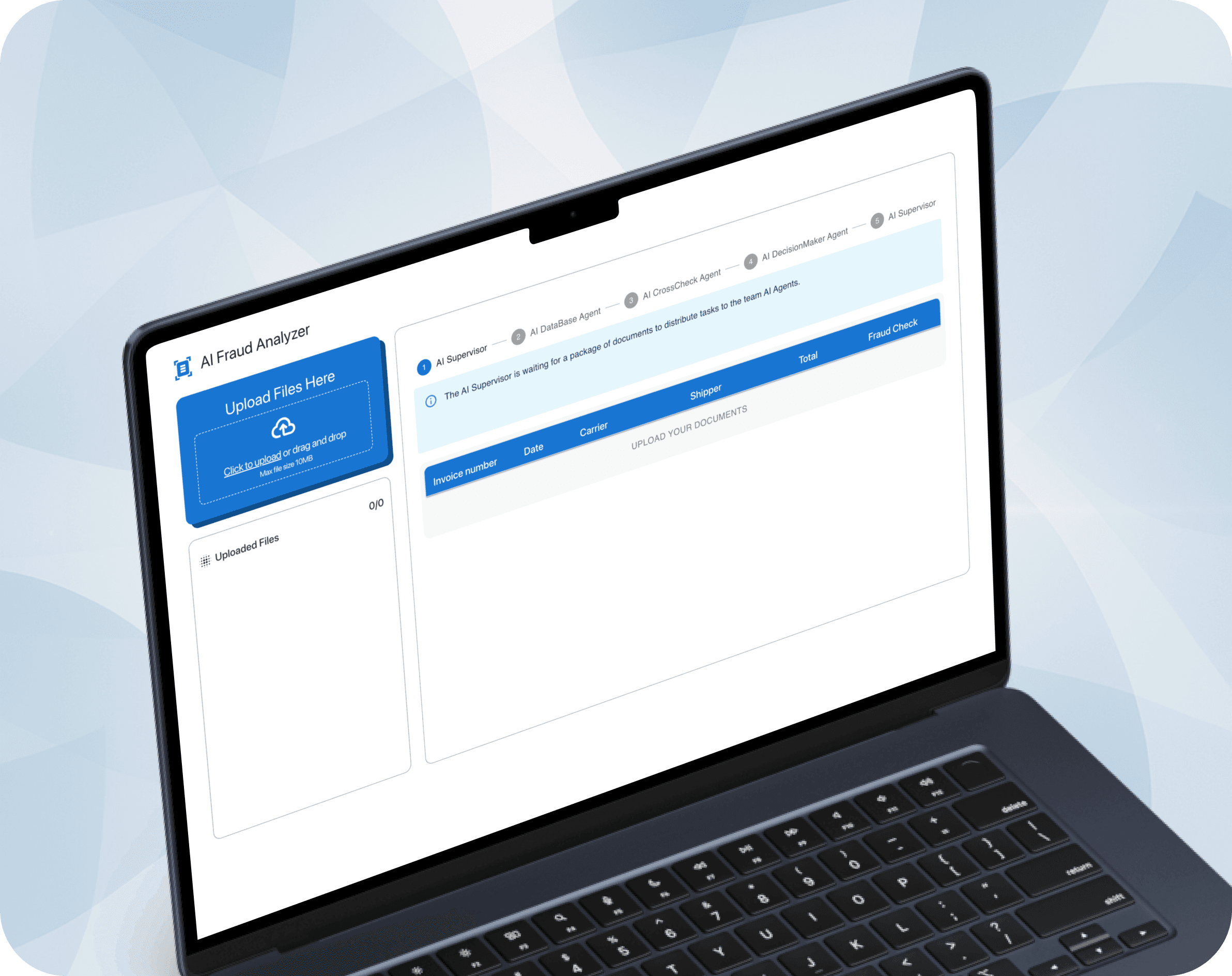- AI/ML Engineering
- MVP Development
- Architecture & Infrastructure Design
- Web App Development
- Dashboard Development
- Data Engineering & ETL
- REST API Integration
- Geospatial Analytics (Turf.js)
- UX/UI Design
- QA & Test Automation
- DevOps & CI/CD
- Security & Compliance
- Pilot Rollout & Support
AI predictive route planning
AI-powered route planning for proactive disruption management and on-time delivery
The project focused on building a secure, scalable platform that predicts and mitigates route disruptions before trucks are dispatched. The solution ingests real-time data from structured sources (traffic reports, construction updates) and unstructured sources (news, social media, disaster alerts) to detect events, score risk, and suggest reroutes, all while fitting into the client’s existing TMS stack. Designed for planners and dispatchers, the app provides real-time alerts, a map-based risk dashboard, and historical disruption logs for planning. Dynamic thresholds by route/region help teams prioritize issues, and seamless TMS integration streamlines execution.
Industry
AI
Headquarters
 Europe
Europe

Services we provided
About the Client
A European logistics provider (scaling globally) managing hundreds of daily routes via an existing TMS. Service levels were often disrupted by road closures, protests, weather, and construction, resulting in driving delays, higher costs per stop, and constant manual replanning. They needed a predictive, data-driven layer that flags risks before dispatch, quantifies route impact, suggests safe alternatives in real time, integrates with the TMS, and logs incidents for planning with region-specific thresholds.
Challenge
Unpredictable events, such as road closures, protests, floods, and ad-hoc city restrictions, regularly derailed planned routes, leading to late deliveries, SLA breaches, and higher costs per stop. Dispatchers relied on manual monitoring and reactive rerouting across disparate data sources, with no early warning signals or impact scoring. Static thresholds and limited incident history made planning fragile. The client required a predictive layer to identify risks before dispatch, assess route impact, and recommend safe alternatives in real-time.

Solution
-
Multi-source data ingestion
A streaming pipeline continuously aggregates structured feeds (traffic APIs, construction schedules, road authority notices) and unstructured sources (local news, social media, disaster alerts). Normalization, deduplication, and geo-tagging prepare events for fast scoring.
-
AI Agent Supervisor
A coordinating agent routes tasks to specialized workers, routes incident analysis, performs policy checks, and decides when to trigger alerts or auto-propose reroutes based on confidence, severity, and SLA context.
-
Event detection & risk scoring
Models detect disruptions near planned segments, estimate time impact by corridor and time window, and compute a composite score using distance to route, event severity, historical delay patterns, and detour cost.
-
Geospatial “problem zone” modeling
Google Geocoding and Turf.js define polygons/radii around incidents, snap them to network segments, and calculate entry/exit points, allowing planners to see exactly which legs are exposed and why.
-
Proactive alerts & rerouting
When thresholds are crossed, dispatchers receive real-time notifications with context (what/where/ETA impact) and ready-to-apply alternative paths that minimize SLA risk and cost.
-
Map-based risk dashboard
An interactive map surfaces live incidents, color-coded route segments, ETAs, and operator actions. KPI panels track delays avoided, alerts resolved, and the impact of each decision.
-
Seamless TMS & Maps integrations
Two-way connectors push alerts and new routes directly into the existing TMS; Google Maps/Geocoding support visualization, turn-by-turn details, and ETA recalculation.
-
Historical logs for planning
All incidents and responses are archived with timestamps and outcomes, enabling trend analysis by region/season/corridor and informing playbooks for future events.
-
Dynamic thresholds
Risk policies are configurable per route/region (e.g., peak hours, sensitive customers, weather-prone corridors), allowing operations to tune sensitivity without requiring code changes.
Features delivered
-
AI event detection from multiple data sources
Continuously scans traffic feeds, construction updates, news, and social media to spot incidents that may affect planned routes.
-
Route disruption scoring
Quantifies the impact of each event on specific routes using distance, severity, timing, and detour cost.
-
Real-time alerting system
Instantly notifies planners/dispatchers when risk crosses a threshold, with context on what happened and where.
-
Rerouting suggestions
Generates safe alternative paths that minimize delay and SLA risk, ready to apply with one click.
-
Map-based risk dashboard
A live map displaying incidents, affected segments, ETAs, and KPIs, enabling teams to act quickly and track outcomes.
-
Seamless TMS integration
Pushes alerts and new routes into the existing TMS workflow to eliminate the need for tab switching and re-entry.
-
Historical disruption logs for planning
Store incident and response history to analyze patterns, seasonality, and playbooks for future planning.
-
Dynamic risk thresholds per route/region
Let's ops set different trigger levels by corridor or market based on SLAs, traffic patterns, and business priority.
Key results and business value
-
38% fewer route delays
Predictive detection and timely rerouting reduced disruption-related delays across pilot corridors, stabilizing ETAs during peak and adverse conditions.
-
30% less dispatcher time
Automated scoring, alerts, and one-click route updates cut manual monitoring and ad-hoc replanning, freeing teams for exception management.
-
Higher OTIF/SLA performance
More consistent time windows and fewer missed appointments led to increased on-time, in-full deliveries and higher customer satisfaction.
-
Lower cost per stop
By limiting detours, idle time, and last-minute changes, the network saw reductions in fuel use, overtime, and exception-handling expenses.
-
Faster incident response
A live risk map and structured alerts reduced the gap between event detection and corrective action, enhancing service recovery.
-
Better planning with history
Trend insights by region/season/corridor informed proactive playbooks and more resilient route designs.
-
Seamless operations
TMS integration removed double entry, protected existing processes, and accelerated adoption across planning teams.
-
Scalable risk governance
Region-specific thresholds align responses with SLAs and business priorities, and can be tuned as the network grows.



